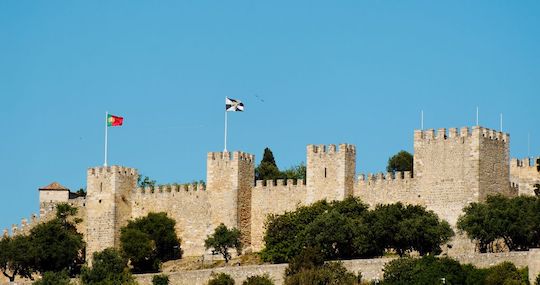The São Jorge Castle, located in the capital of Lisbon, is one of the most historic places in the city. As it is located on the peak of the hill bearing its name, it can be seen from all parts of the city.
Built in the 5th century by the Visigoths, it was enlarged and fortified by Muslims in the 9th century when it was known as the Castelo dos Mouros, or Castle of the Moors. In the middle of the 12th century, it was reconquered Alfonso Henríquez, the first king of Portugal, in a three-month period. This reconquest would not have been possible without the help of the Crusaders who participated in the seige. In fact, the castle’s current name, Saint George, was given to it because many of these Crusaders devoted themselves to the martyr St. George. In the following centuries until the 16th century, the castle thrived. When Lisbon was constituted as the capital of the kingdom, the castle became a Royal Palace. It was the witness of various historical events. Among them was the reception of Vasco de Gama in his return from India.
The castle itself is an impressive fortification with eleven fortified walls, which gives the possibility of obtaining one of the best views of the city. But it is not only the walls that protect this fortification, but all the ancient olive trees that surround the hill where the castle is located, which is a majestic work of defense and protection. The olive trees, located at the foot of the castle, are all aligned along its walls as if they were standing guard to preserve and forever protect the fortification that has been victim to numerous civilizations and natural disasters, such as the Lisbon earthquake of 1755.
These natural guardians found at the castle, which still bear fruit today, have been witnesses to so many different historical events surrounding the castle. Proof of this is the twisted trunks that the olive trees have. This proves how old they really are, and how prosperous they have been for such a long time. This is yet again a reminder of the importance the tradition of olive growing has held in our history.

